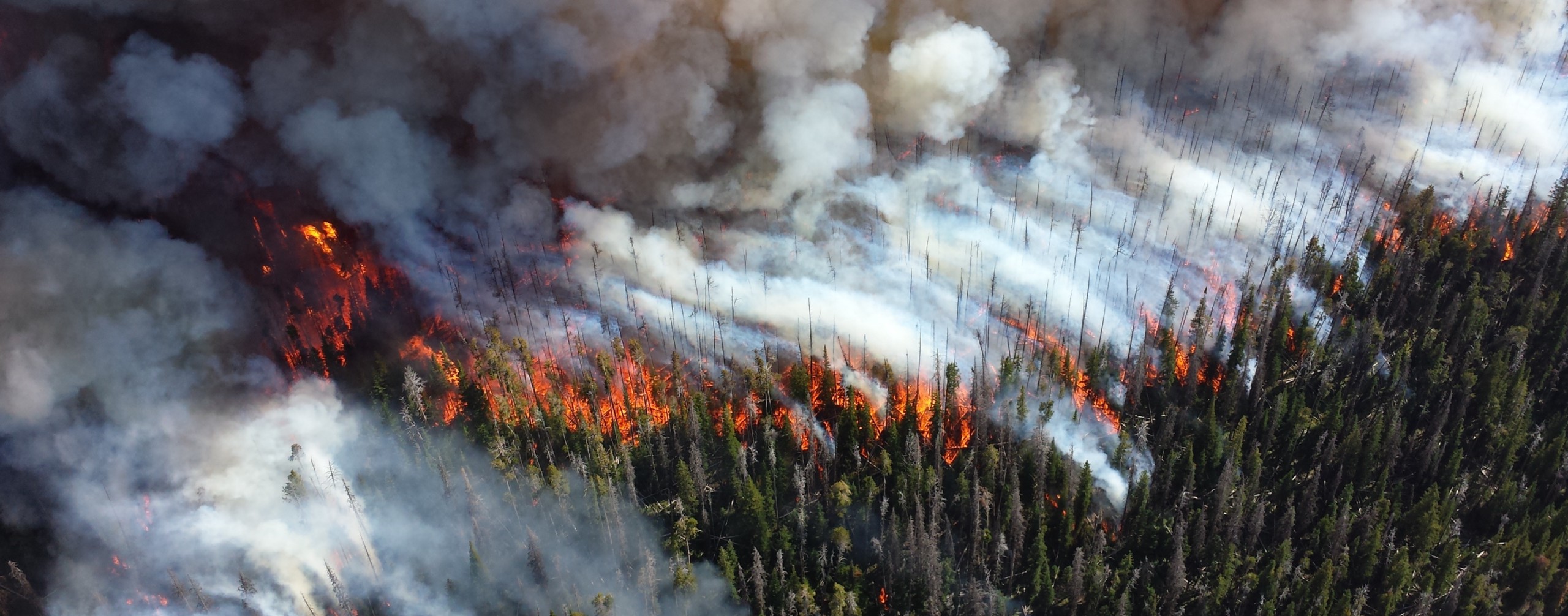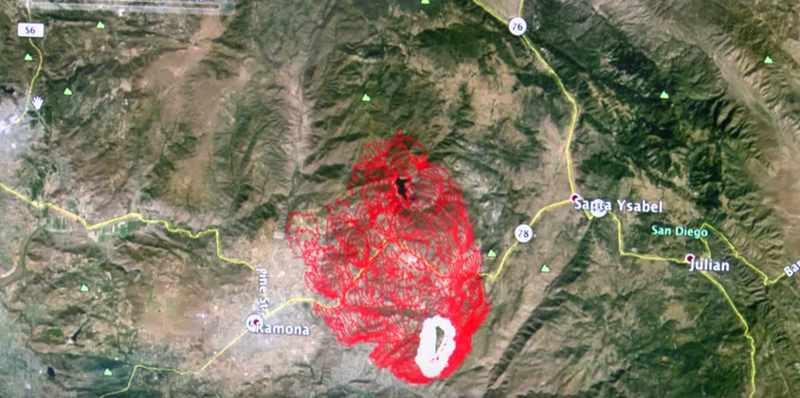

The world is literally on fire. At the time of writing, a Global Incident Map showed some 30 places burning, from California to New Zealand to Indonesia. In the United States alone, more than 9 million acres have charred since the start of 2015. In August, the country was at wildfire preparedness Level 5 (the highest) and had 30,000 firefighters and additional members of the military battling 10 huge blazes across five states. This was the largest mobilization of support called forth in the last 15 years. According to model predictions by the Harvard School of Engineering and Applied Sciences, “Wildfire seasons by 2050 will be three weeks longer, up to twice as smoky, and will burn a wider area in the western United States.”
Wildfires are not uniquely American; though. These destructive dangers regularly flare up around the world, with costs due to losses from fire estimated at nearly 1 percent of global GDP each year and fatalities reaching into the several thousands in Europe alone. And while the violent blazes can be tough to model, fires actually have a lot of information to give. Heat, fumes, wind, terrain–these variables affect everything from how flames develop to how the infernos are fought. Digital information flowing through the rapidly developing sensor-based Internet of Things should help make firefighting safer for individuals on the ground and maybe even allow for predicting how fires spread.
“We want to get that data, that information, into the hands of the people who could use it and use it effectively,” said Casey Grant. He’s the executive director of the National Fire Protection Agency, which detailed how best to use sensors in a firefighting environment in a research roadmap published earlier in 2015. The key takeaway? The new world of firefighting will depend on smarter physical systems, where all data has value and “virtually nothing is excluded.”

Sensors are becoming more common in street lamps, weather stations, and electrical towers, meaning wildfires could come in contact with plenty of opportunities to transmit their information.
San Diego County in California is a perfect example. In the early 2000s, the local energy company added weather stations and wind monitors to its electrical grid to keep an eye on the problematic Santa Ana winds. Those sensors, in conjunction with quad-directional cameras, provided the perfect opportunity for wildfire monitoring. Soon, researchers at University of California, San Diego, realized that the data being collected could be even more useful. They wanted to predict the unpredictable.
Fires are hard to model; wildfires even more so. “The best you can do is to be ahead of the fire and predict what’s going to happen so you can manage it,” said Dr. Ilkay Altintas, the chief data science officer at the San Diego Supercomputer Center. Altintas and a team of researchers started work on WIFIRE (a portmanteau of “WiFi” and “wildfire”). With WIFIRE, the researchers plan to model the future paths of wildfires, displaying a visual version of data coming in from sensors on a screen either at a stationary command center or on portable tablets that can be moved from incident to incident.

Altintas and her team are currently testing the accuracy of their modeling algorithms using historical fire data.
“Our models run pretty accurately. They learn pretty fast,” she said. Data from more recent fires shared by area departments allow the WIFIRE team to further refine their process. “This is a typical form of Big Data because the data is coming from all kinds of different sources and forms and resolutions and scales,” Altintas said.

Applying smart sensors to firefighters themselves could also improve firefighting techniques and keep people safer during high-heat, high-stress situations.
“[Firefighting is] truly one of the most demanding professions you can have physically,” said Claire King, president of Propel LLC and a collaborator on the sensor-laden firefighting shirt made by the company Globe. “Making complex, life-dependent decisions for the general public under very stressful conditions “¦ that shows up in the physiology.”
Globe’s WASP, or Wearable Advanced Sensor Platform, monitors that physiology. The breathable, washable, fire-safe clothing includes a strap with sensors to monitor things like heart rate and core body temperature and features a belt that can locate a firefighter inside a structure down to a one-meter radius.
Firefighters battle blazes in approximately 20-minute shifts. In between those shifts, they’re evaluated by medical technicians in what is called “rehab.” During tests of the WASP system in firefighter training, information coming from the sensors allows the medical technicians to prioritize drastic cases and monitor more carefully those whose vitals have spiked during action.
“It’s not a medical decision-making tool,” King said. “It’s to augment the information that they would typically collect in rehab and help them understand what’s going on with individuals.”
That’s true of any sensor system used in an emergency response situation. The data can’t make choices for the incident commanders or firefighters, but it can help them make more informed decisions faster.
“This is a decision support system,” said Altintas. “It’s a system to give information to the right people in the right form.”

Finally, there’s Patrick Jackson. He’s a Google Glass Explorer and developer with an interest in firefighting–because he used to do it in Rocky Mount, N.C. Currently, he’s building glassware for firefighters to wear in the field. Its intent? To provide on-demand, hand-free access to information about the fire and where its going.
The biggest challenge moving forward with any of these technologies, of course, will be changing old methods and efficiently incorporating them into fire departments. But Altintas, King, and Grant are confident that sensors are the way of the firefighting future.
“It’s good now; it can only get better,” King said. “We’re just at the beginning of the smart age with these kinds of things.”
“This is not a fad,” Grant agreed. “This is not going away. This is the world we live in today and tomorrow.”


How We Get To Next was a magazine that explored the future of science, technology, and culture from 2014 to 2019. This article is part of our Nature & Climate section, which looks at how human activity is changing the planet–for better or worse. Click the logo to read more.
